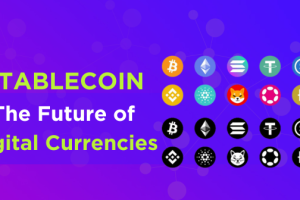What are the Virtual Digital Assets and NFTs?
- Posted by 3.0 University
- Categories Cryptocurrency, NFT
- Date January 16, 2024
- Comments 0 comment
Technology opens new gates for artists to reach out to people worldwide and connect with others who are passionate about arts. The concept of Non-Fungible Tokens NFTs has monumentally revolutionized the art market and how we perceive provenance and rarity.
What’s more supremely interesting is that NFTs have significantly impacted the art world and the art market. They have transformed the art market by leveraging blockchain technology to provide a new perspective on purchasing, selling, and experiencing life in the world of art.
NFTs provide a stable and honest environment for artists where they can display their digital artworks securely while being able to retain ownership rights and obtain revenues each time the token is sold later. Digital artworks have become popular and valuable possessions.
Amid ongoing debates and fears about ecological side effects on NFTs, in addition to possible speculative patterns of this market, it is impossible not to notice a rise in inspiration and turbulence that they introduced into art.
These digital assets have thrown open a new universe of possibilities for artists, collectors, and enthusiasts hailing from the era of innovation.
Users can own, trade, and use Virtual Digital Assets (VDA) within virtual environments or digital ecosystems. These assets span from digital currencies like Bitcoin and Ethereum to virtual items such as weapons or cosmetics present in the world of video games.
Virtual digital assets’ impact on the world has been truly great.
At first, in-game items were only attainable within the video game sphere. Blockchain technology, however, has taken the idea of virtual assets away from just game worlds.
Indisputably, with the use of blockchain technology, it has become easier to manage and own virtual assets due to its decentralized nature as well as being transparent. The unprecedented phenomenon is that the emergence of NFTs has brought a new generation of digital assets.
These unique tokens can represent the power of ownership over a given item, artwork, or collectible.
2021 saw NFTs become incredibly popular, with several significant transactions involving art from prestigious artists, virtual real estate, and even tweets. These assets can be bought, sold, or exchanged on various decentralized marketplaces using cryptocurrencies.
Out of utmost certitude, it is being observed that the authorities and governing bodies are currently faced with the problem of how to handle NFTs, which are growing in prominence and can potentially affect taxation, intellectual property rights, and consumer protection.
Empirically, in recent years, virtual currencies like Bitcoin have become increasingly popular as an accepted form of payment.
The dogged and several opinions are that respectable companies such as Tesla and PayPal accept these currencies, treating them like normal tools of trade. The increased acceptance of virtual assets has led to their widespread recognition and use in mainstream society.
Further, the advent of virtual digital assets has triggered progress in various sectors, such as Virtual Reality VR and Augmented reality AR. VR and AR systems are now stepping into the field of involving virtual assets in their engaging experiences, which bring promising prospects for virtual trade as well as connection.
With the rapid advancement of technology, virtual digital assets will inevitably become an essential aspect of our daily lives.
Through different channels like gaming, investments, and digital sharing, these assets are transforming the digital ecosystem. There is a change in the idea of owning or trading something in electronic reality.
Virtual Digital Assets World
There is a huge library of various digital assets that goes well beyond text, photos, videos, audio, and documents. In 2009, Bitcoin launched the blockchain as a public record that is verified by consensus.
Data is also a valuable digital commodity that needs to be secured, organized, and stored, just like computer systems analysts. This concept has become antiquated.
If a person is not knowledgeable enough when it comes to the intricacies of data science, management, analysis, and areas that demand deep learning about distributed data networks, this information may be quite surprising.
A digital asset is valuable, and its owner can gain considerable advantages from it. It should be possible to transfer the digital asset to preserve its value by acquiring it or bestowing it. The capacity to organize and retrieve information effectively is crucial.
There are various categories of digital assets
You have a plethora of digital items available. A variety of things, including images, movies, books, audio/music, animations, drawings, manuscripts, emails, logos, metadata, content, social media accounts, and games, could be found there.
Modern digital assets leverage blockchain or other state-of-the-art technological innovations. The concept of nonfungible tokens has become a hot topic relatively recently.
Since their introduction, they have transformed our way of understanding and distributing electronic materials.
Digital Currency
At times Appearing Omnipotent Cryptocurrencies Assets in the digital realm, securities tokens, and that of central banks. The emerging cast of digital resources is a natural reflection of our increasing digitization.
We use digital tools to develop our learning experience and help us find information faster than using traditional library resources.
Corporations or governments store most photos, entertainment, and important documents in a digital format. The importance of the information that corporations and governments hold can vary in different instances.
The 2010s was the period when blockchain technology and cryptocurrencies emerged, which significantly changed investors’ and governments’ perceptions of digital assets as well as those of an ordinary man on the street.
Cryptocurrencies have effortlessly shifted to becoming digital assets, with an overwhelming desire and incredible value.
Astonishing Statistics
A few statistics and citations that highlight the growth and impact of virtual digital assets:
The forecasted gross total is US$3,282.00m on the baseline assumption of growing by 11.34% per year (CAGR, which may still raise questions; however, this part should be sufficient for this case study scenario).
The NFT market is projected to earn an average price per user of $138 in 2024.
By 2025, experts estimate the total value of the global virtual goods market to hit an impressive USD 189.76 billion.
The growing popularity of virtual goods can be attributed to the fact that a large number of youths have embraced social networks and online gaming sites. Virtual games use virtual currencies to buy all sorts of different avatars’ goods.
2017 The virtual good global market is at a remarkable growth rate as there are more and more online gamers willing to pay real money for swords, magic wands, or houses.
As precepts of expertise have it, according to platform and product data, after a busy first quarter of the year, April saw slowdowns in the market for non-fungible tokens (NFTs).
Substantiating it, NFTs are digital assets on the blockchain that include many things, such as art, videos, songs, and tweets.
Recently, in March, Christie sold an NFT art piece for the whopping sum of $69.3 million. This innovative sale represented the first time a large auction house has ever sold an art piece that is entirely digital in nature.
In 2022, there were over eighty-one million wallet users on Blockchain.com where one could buy Bitcoin. To clarify, when analyzing the download statistics from different cryptocurrency applications around the world, such as Coinbase and Blockchain Wallet,
These statistics show the fast growth and growing importance of virtual digital assets, such as NFTs, in various sectors and markets.
You may also like
Cybersecurity Skills Components
Cyber Threats: The Fluid Landscape The times are for staying ahead of the game and keeping oneself safe from future cyber threats, it’s important to familiarize yourself with the history of these sneaky attacks. From pesky viruses to ransomware assaults …
Role of NFTs in Digital Education
Discover the developing sphere of NFTs and how they are changing digital educational products using a universal perspective, alongside an Indian one. Supported by many credible reports, statistics, and in-depth analysis, this article delves further into the connection between NFT …

